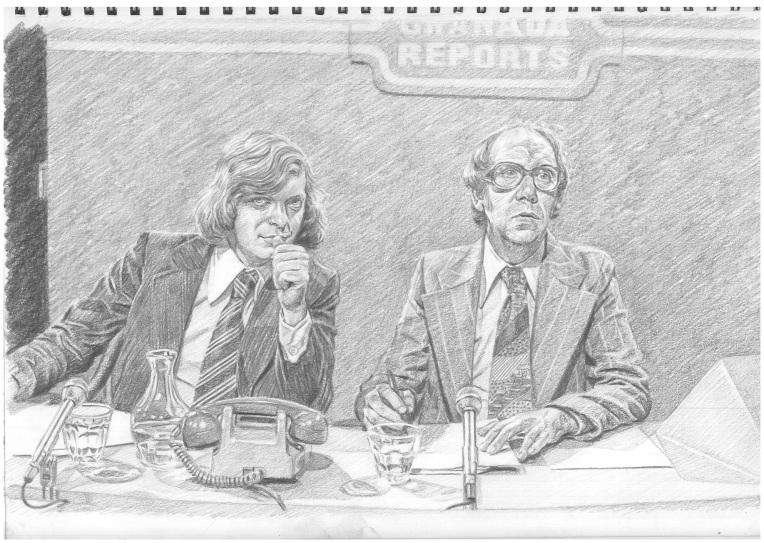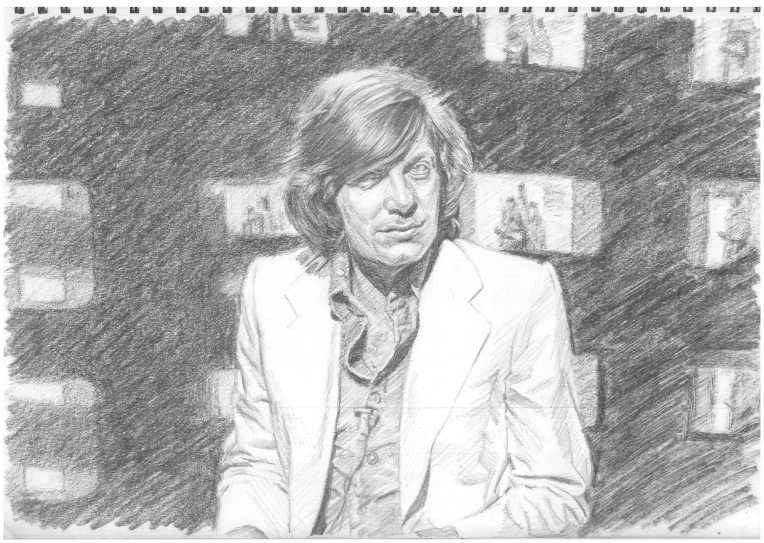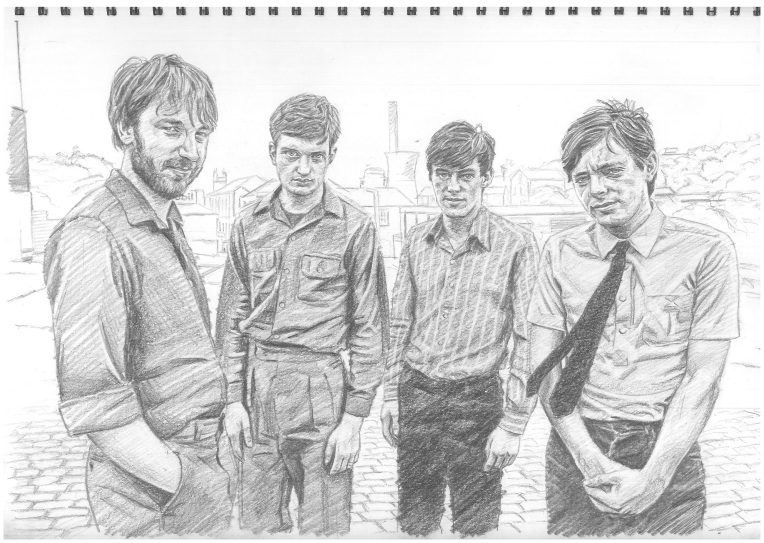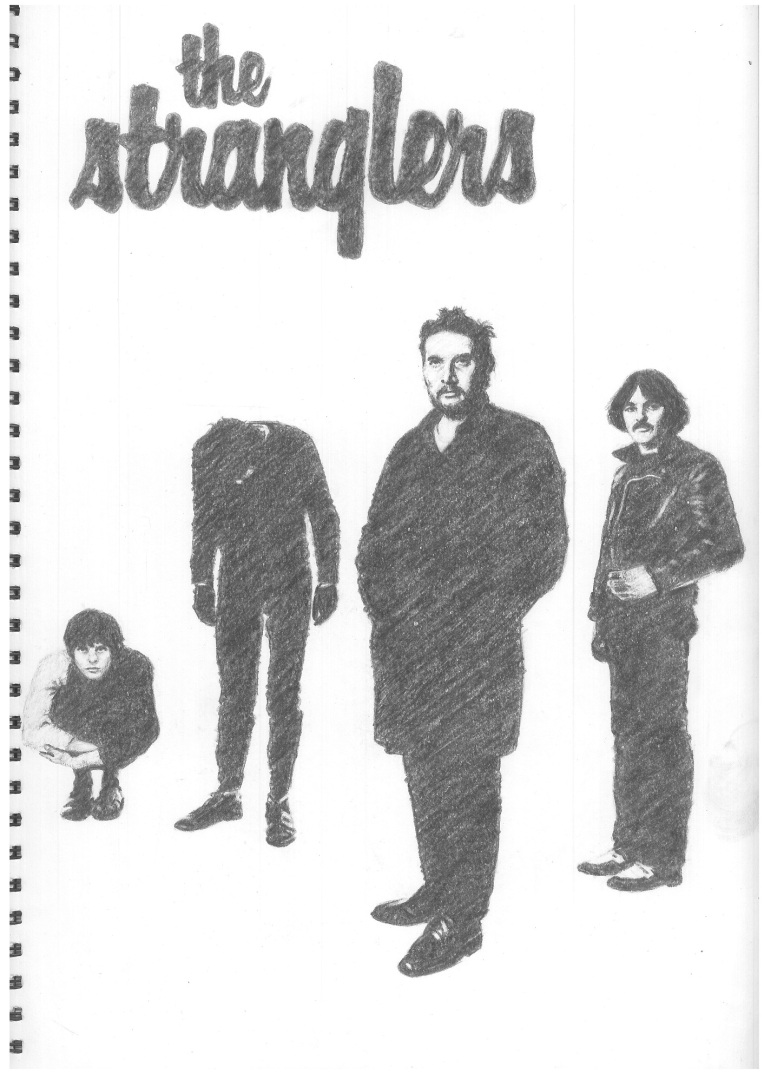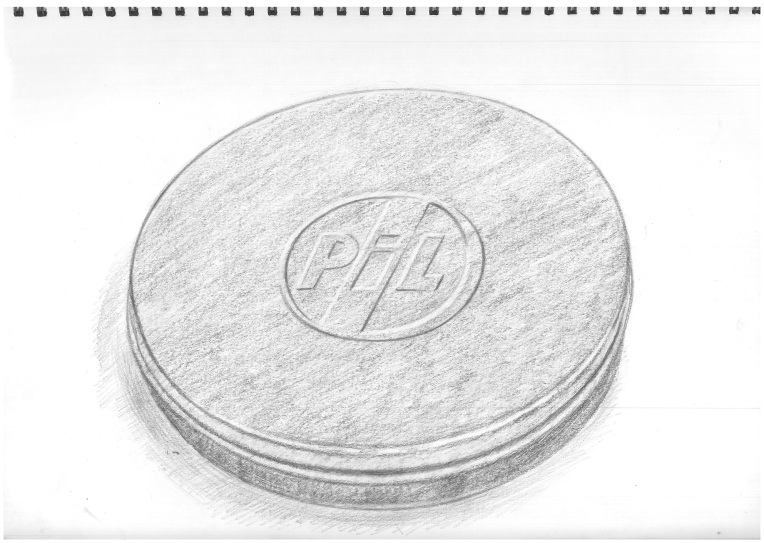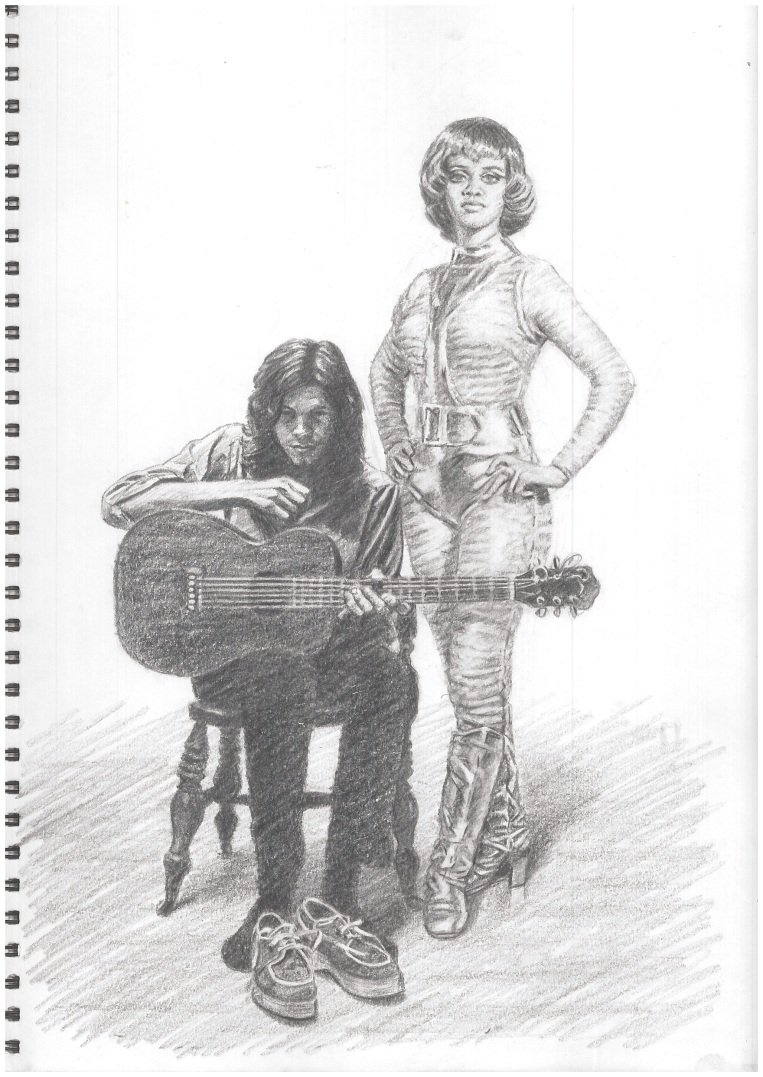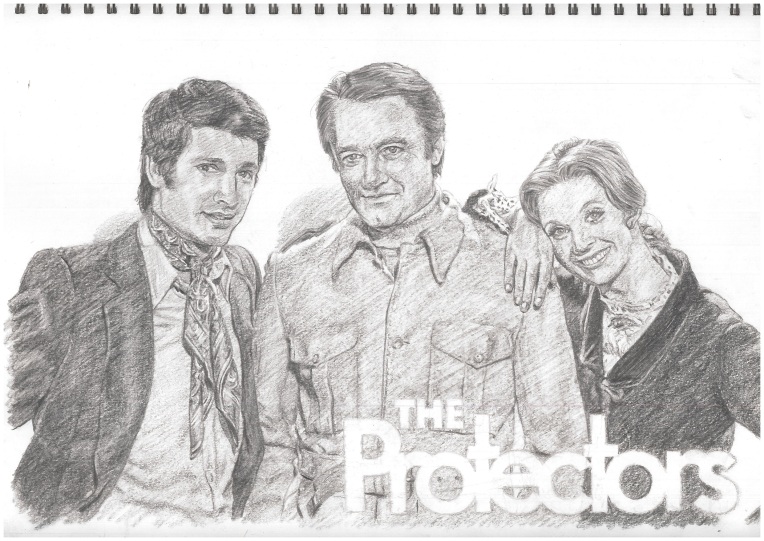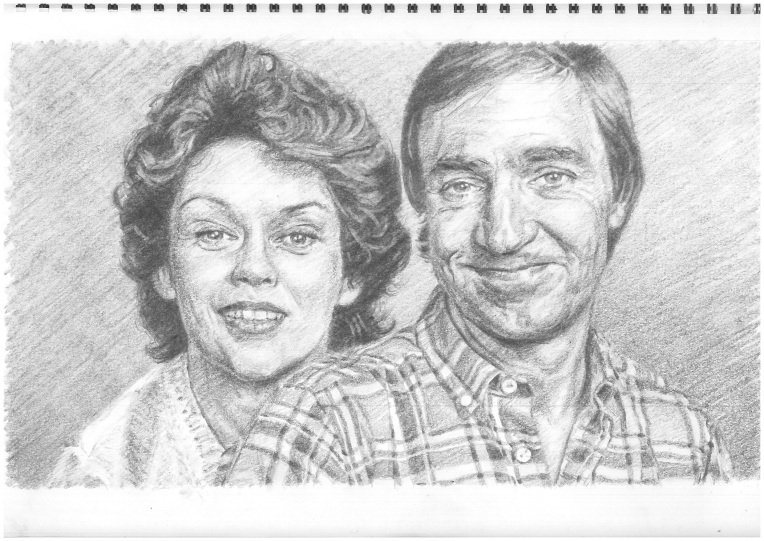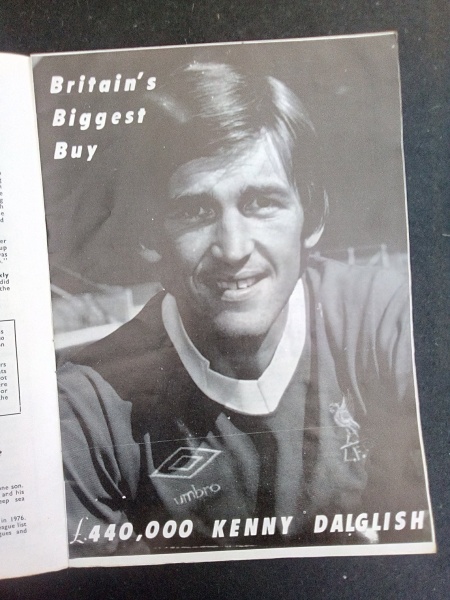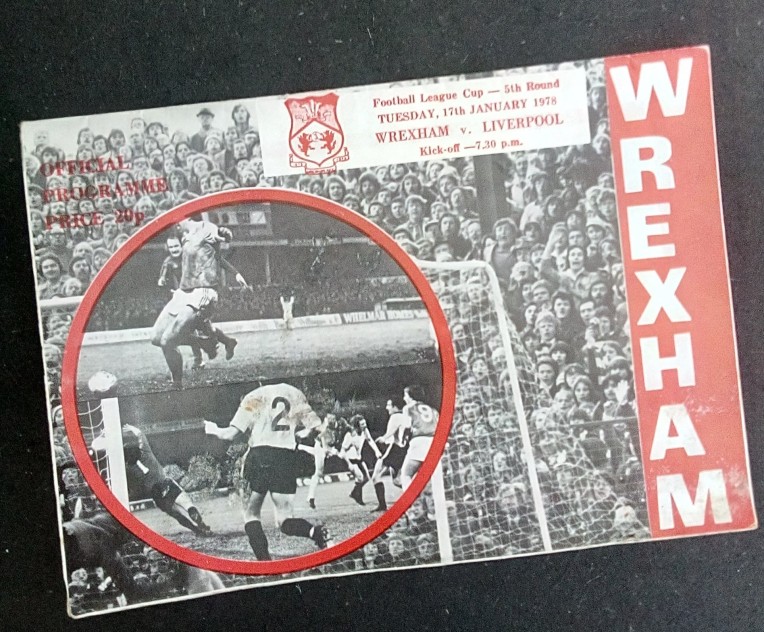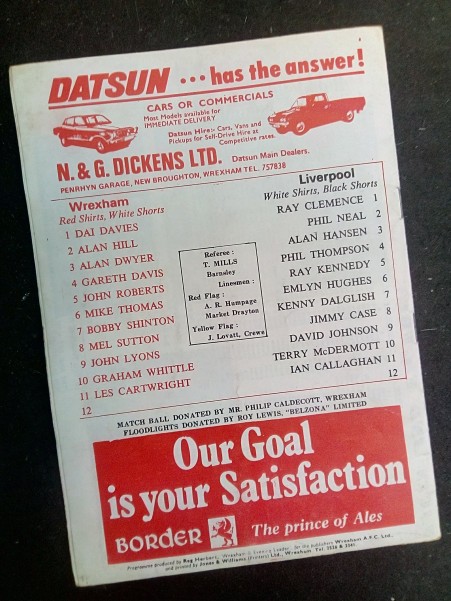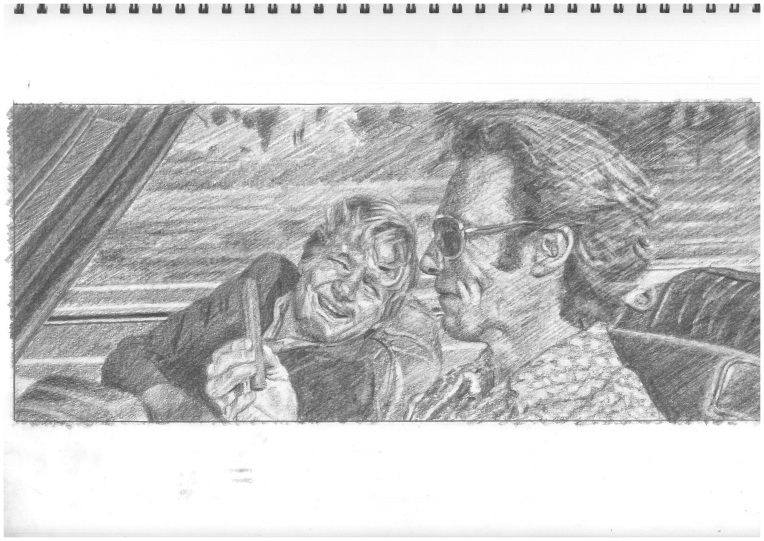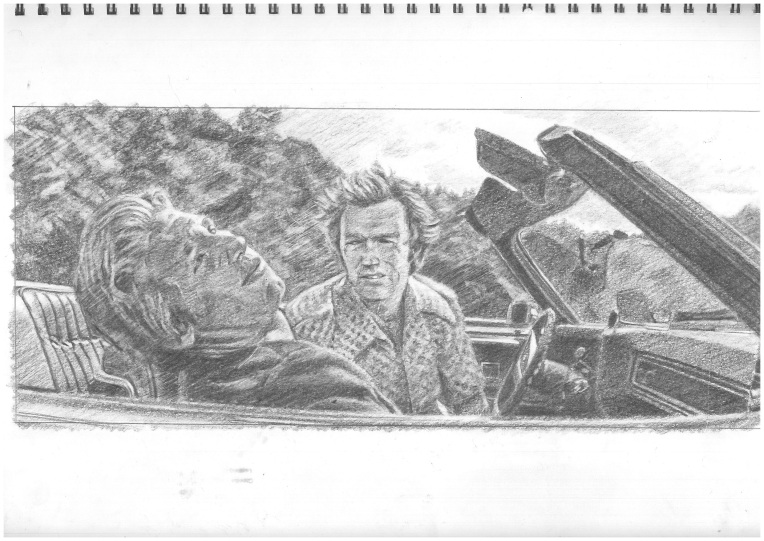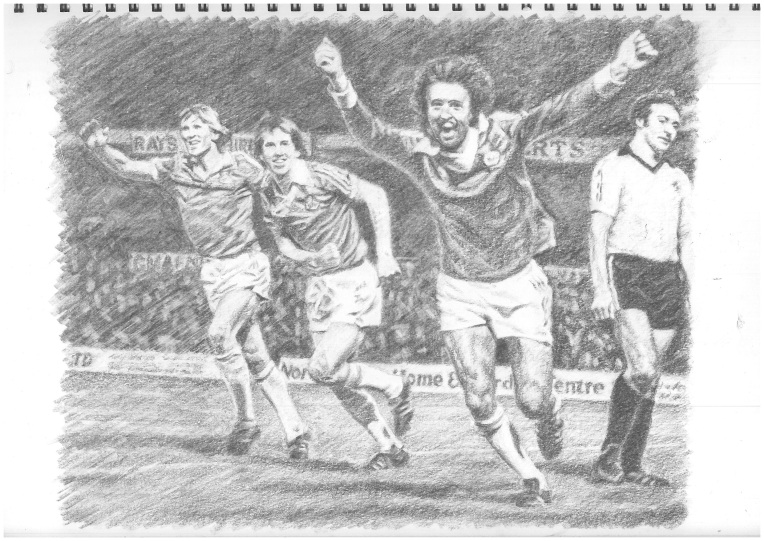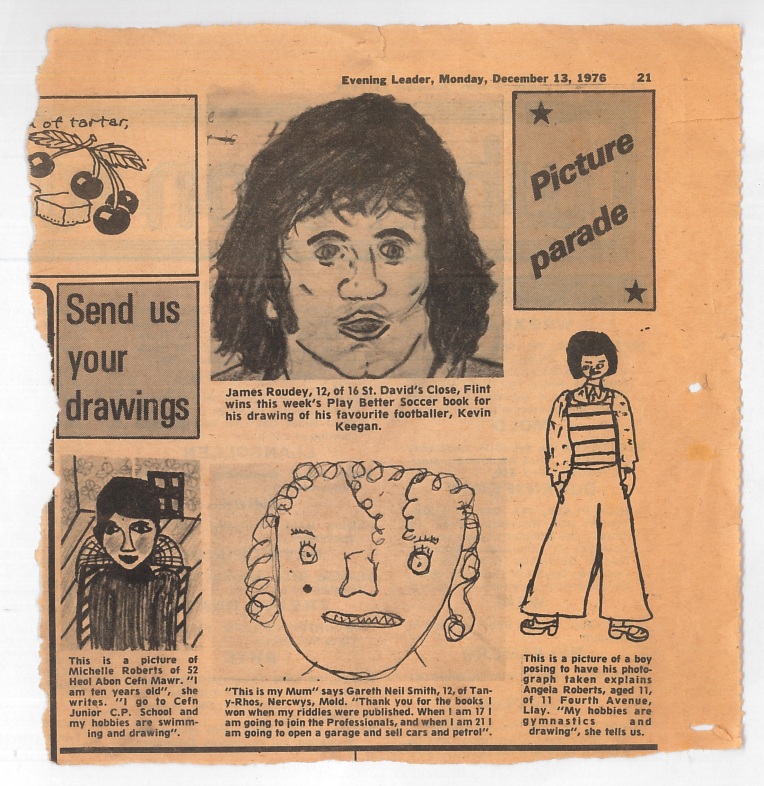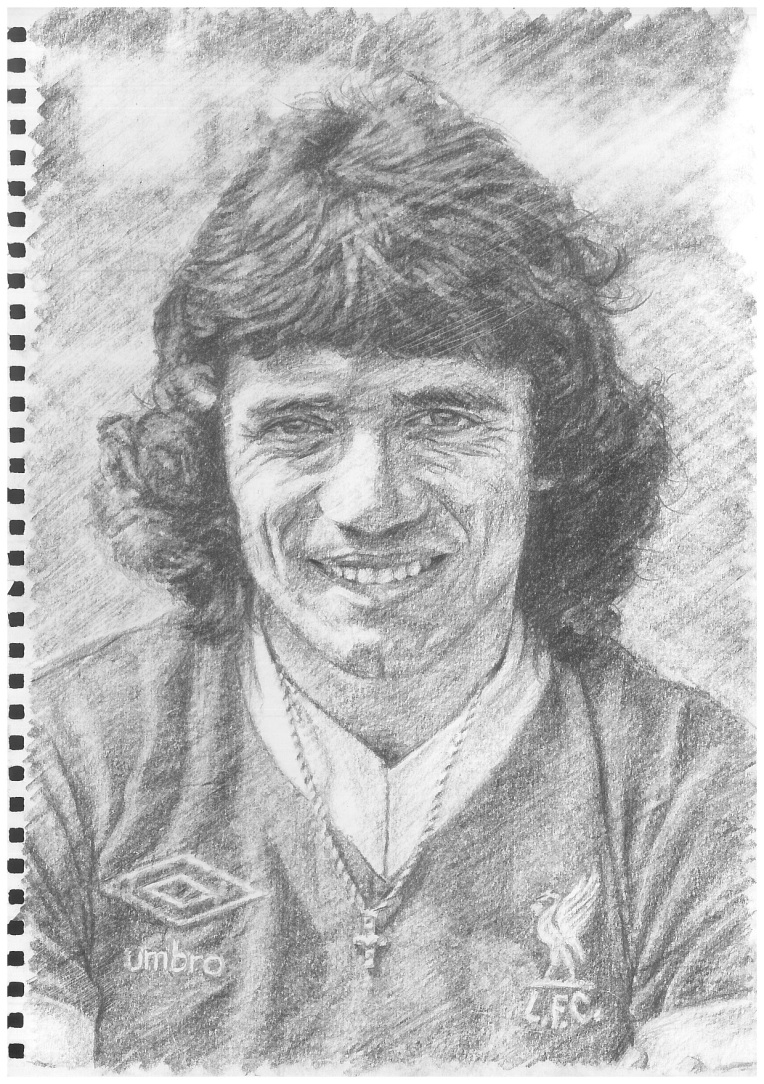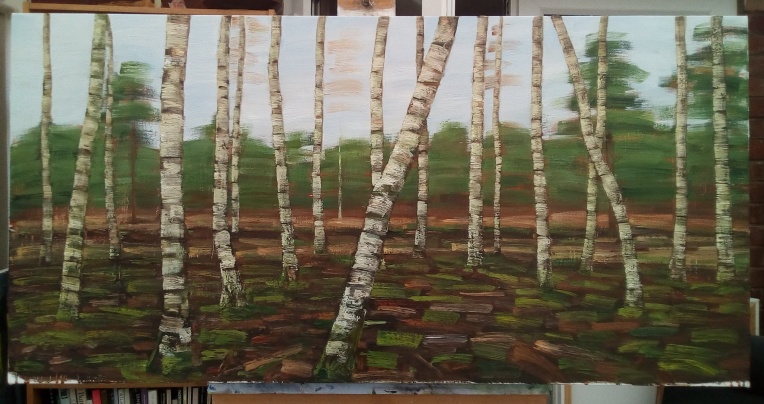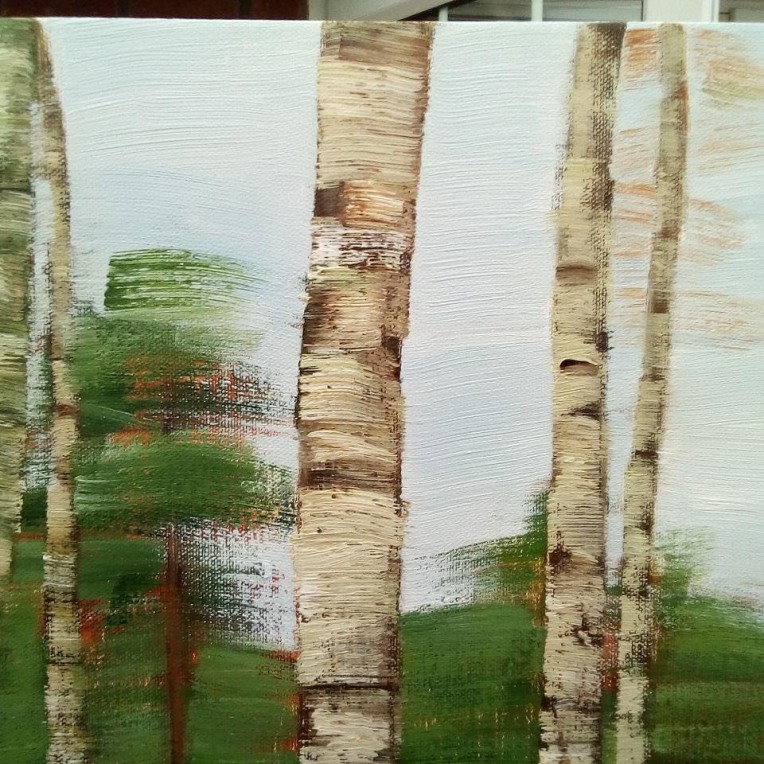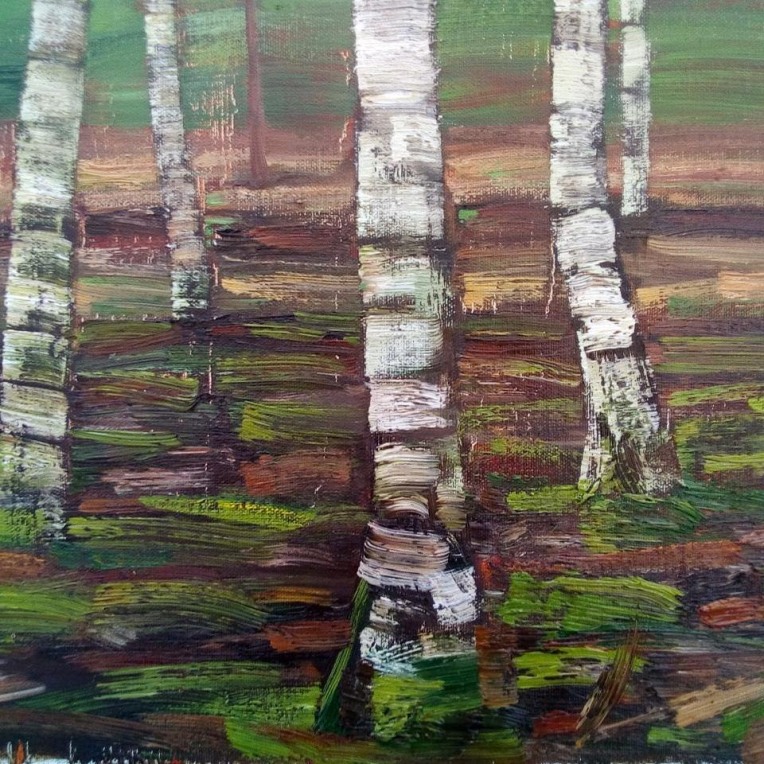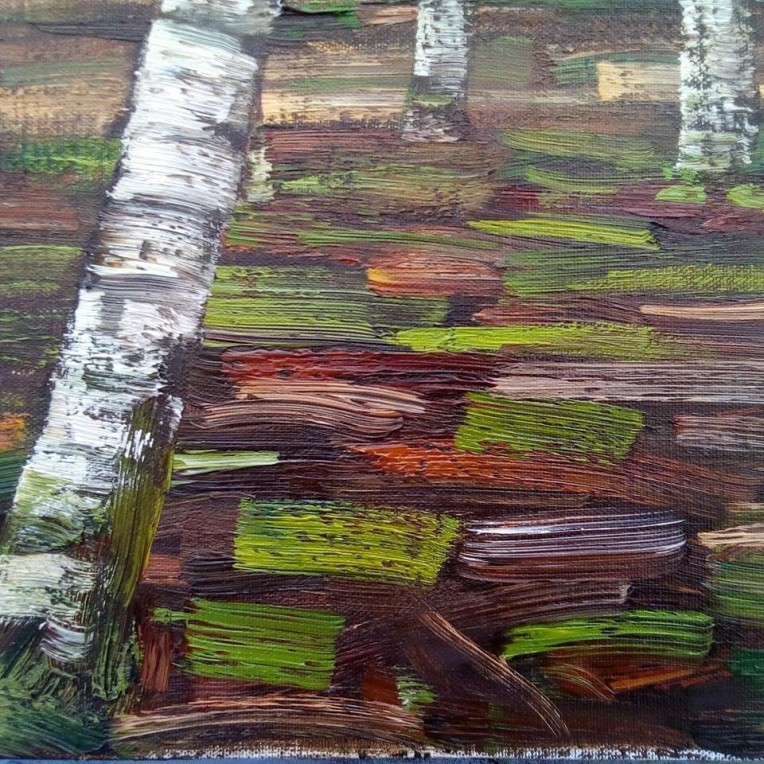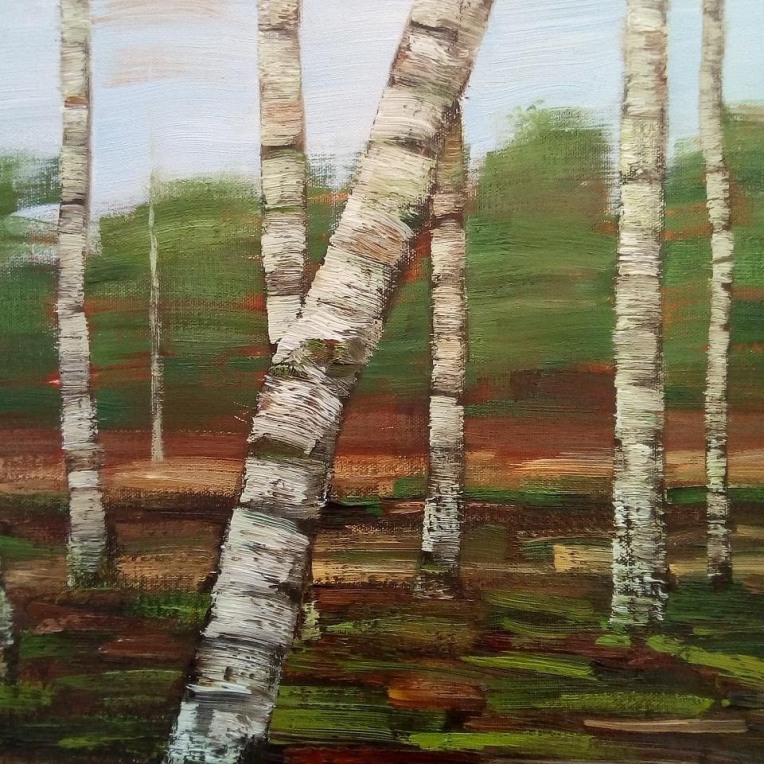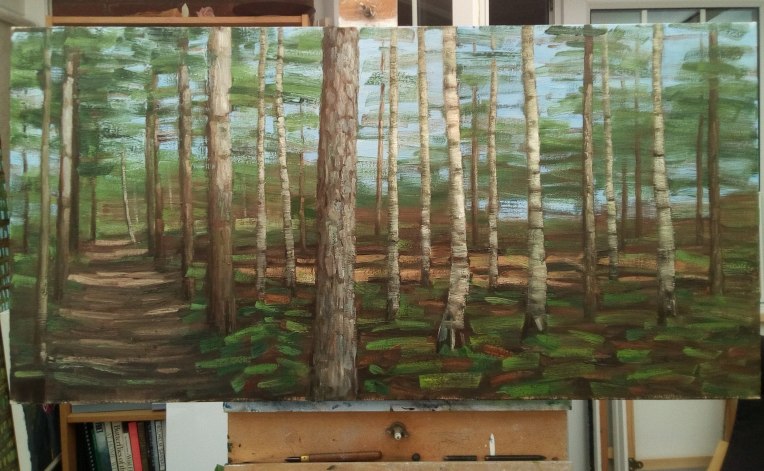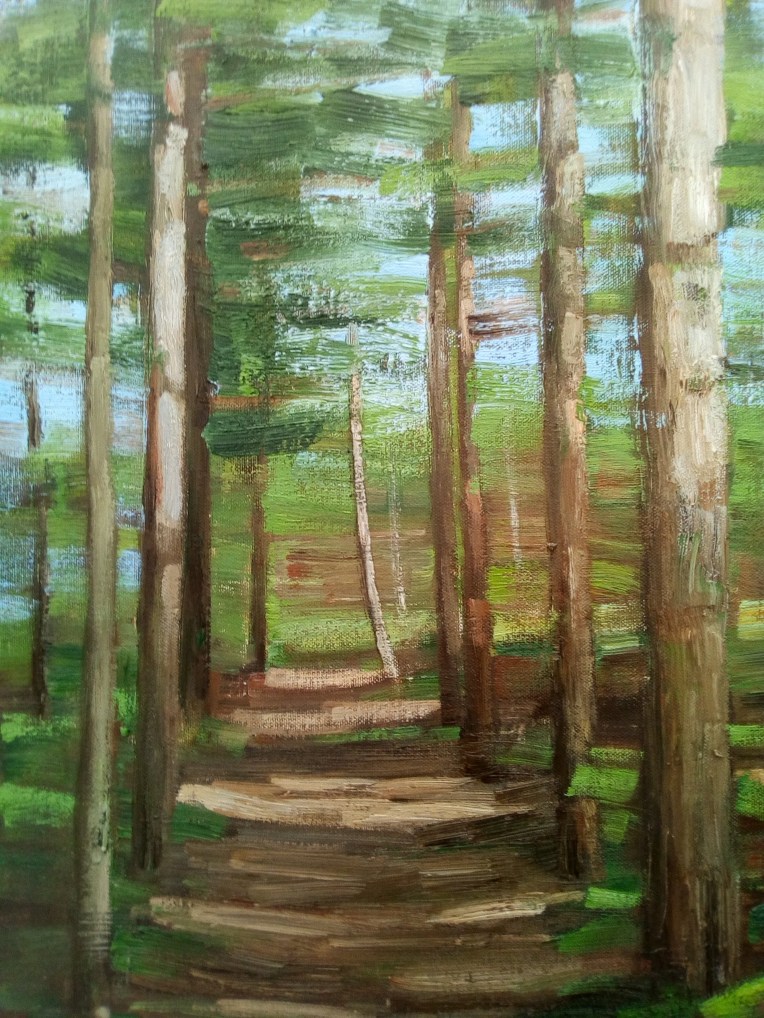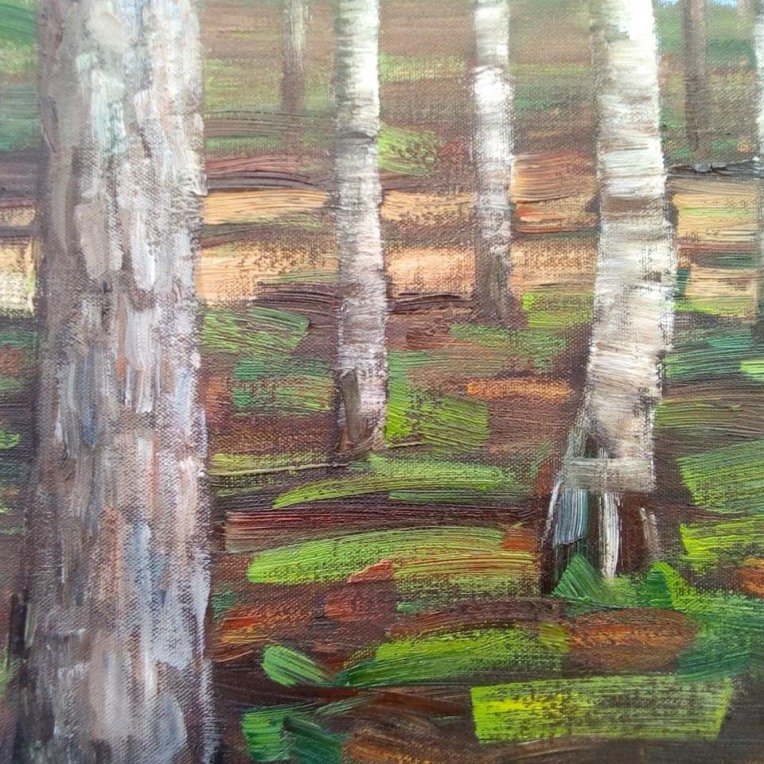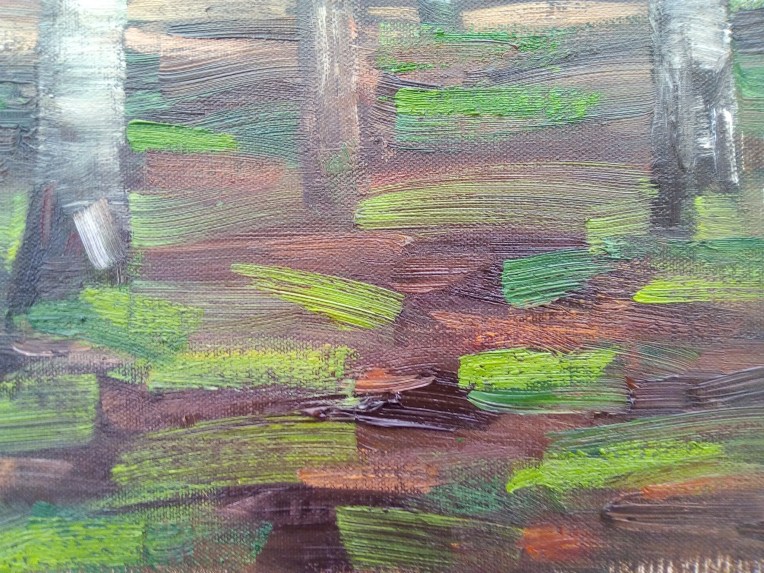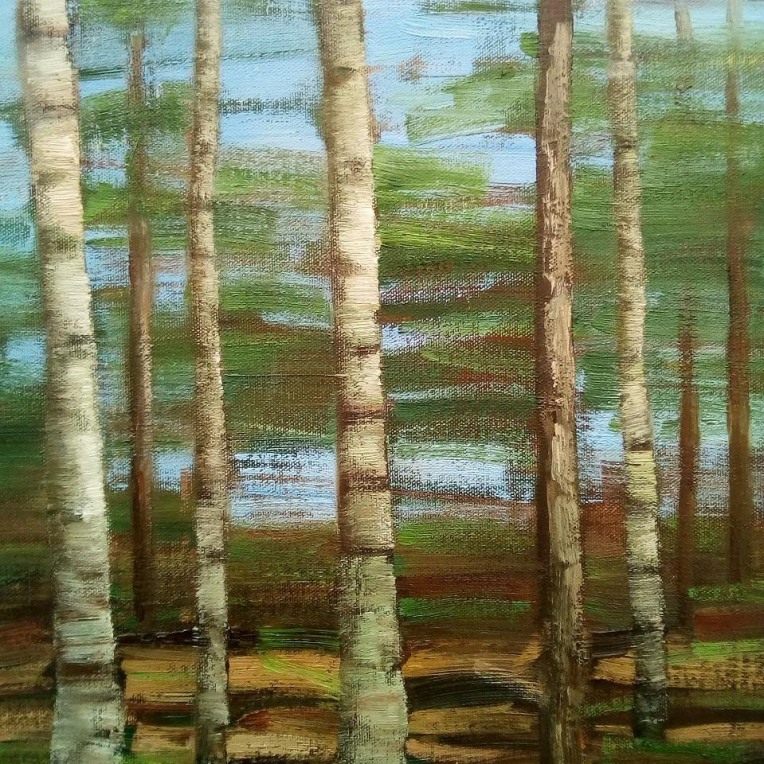Back after our half-time orange, the Seventies project now takes a turn into what has proved to be an abiding area of interest from the middle of that decade to the present, namely European football.
I’ve blogged on this subject previously and extensively, but, basically, I got into football via the 1974 World Cup and became immersed in the game in the autumn of that year with the domestic season and the exploits of a selection of British clubs in the various continental competitions for which they had qualified. However, what most appealed, mostly, when encountered via the results pages of the Daily Mirror newspaper and, in particular, Shoot! magazine were the identities of these teams’ opponents and, in an unwitting act of un-nationalism, such gloriously exotic names became immediate and enduring favourites.
Two of these happened to feature as Liverpool’s opponents in the opening two rounds of the now sadly defunct and much-lamented European Cup-Winners’ Cup, which was pure coincidence but nevertheless acts as the inspiration for the following two drawings.
First of all, the magnificently-monikered Strømsgodset, from Drammen in Norway, presented themselves as an attractive proposition and an underdog to be embraced after receiving an 11 – 0 pasting at Anfield in the first leg of their First Round tie. Prior to the return fixture, which big match was scheduled to take place in the national Ulleval Stadium in Oslo, a particularly wet Norwegian autumn had rendered the pitch somewhat churned-up and waterlogged, apparently to such an extent that the match was under threat of postponement.
Liverpool’s star striker duo of John Toshack and Kevin Keegan – the latter of whom we’ve already encountered twice earlier in this project – were sent out to perform publicity duties and be pictured ‘testing’ the state of the surface, albeit in their civvies (admire those fashions, those flares, if you will) rather than playing kit, and the source image of this media performance provides grist to the artistic mill in this instance. Much to the Liverpool contingent’s disbelief, as subsequently reported, the match did go ahead on the ‘cow field’ and our heroes Strømsgodset managed an impressively doughty display to restrict their opponents to a mere single-goal victory on this occasion: since, they have maintained a place in my heart.
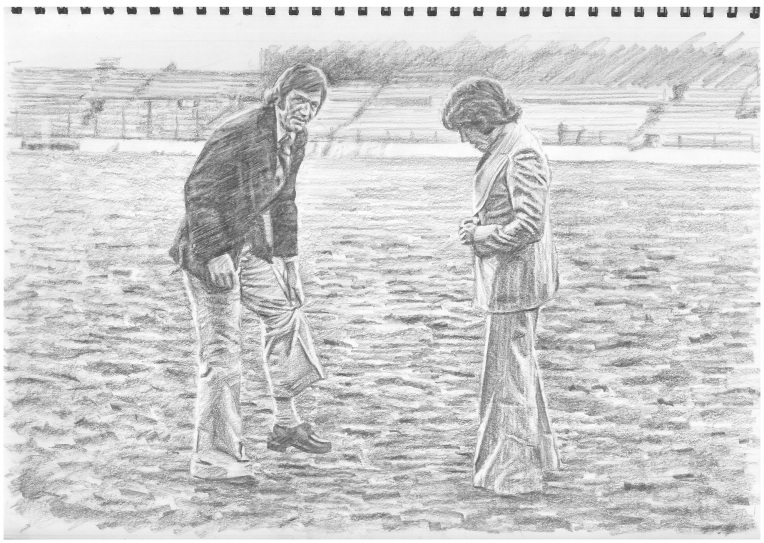
John Toshack and Kevin Keegan, Oslo, October 1974
graphite and putty eraser on ‘Seawhite’ cartridge paper/42 x 30cm
Liverpool’s reward was to progress to a Second Round meeting with Hungary’s wonderful Ferencváros, one of a number of attractive clubs from Budapest, who had previously eliminated Cardiff City from the competition after a fabulous 4 – 1 victory on Welsh soil (as I was to become a Wrexham FC supporter, historically this defeat of the most despised of rivals is thus doubly enjoyable), and it is the first leg of this match, on Merseyside, that provides the source image for the next drawing, of Liverpool, and Kevin Keegan (again!) in particular, pictured attacking the Ferencváros goal. Keegan scored on the night to give his team a lead they held until the final minute, when Maté equalised for our Hungarian heroes, a goal that ultimately proved decisive as, following a scoreless return match, Ferencváros progressed to the next round courtesy of the ‘away goals rule’ in the event of a tied aggregate, a journey that subsequently continued to the Final of the 1974 – 75 season’s Cup-Winners’ Cup, where they sadly succumbed 0 – 3 to the then-Soviet Union’s Dynamo Kiev, one of the great clubs of European football but nowhere near one of my particular favourites, even from the Ukraine.
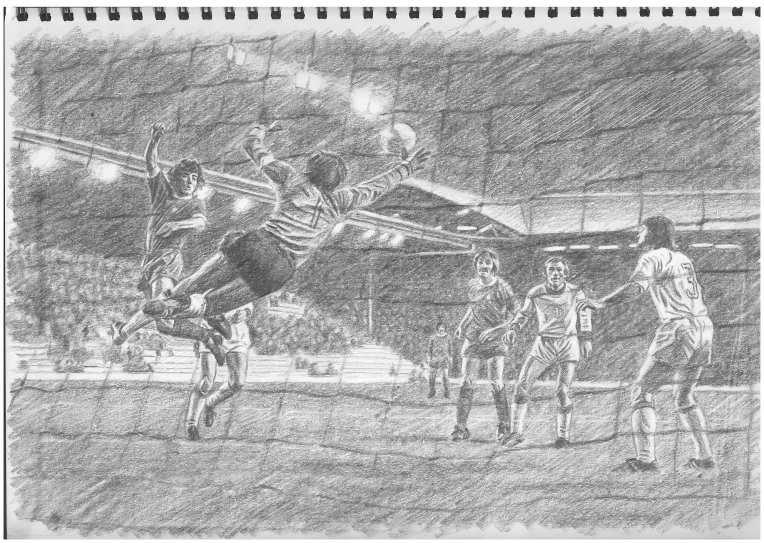
Liverpool v Ferencvaros, ECWC, October 1974
graphite and putty eraser on ‘Seawhite’ cartridge paper/42 x 30cm
My first taste of live European match action came in September 1978, when I attended the Wrexham v NK Rijeka – then of Yugoslavia – European Cup-Winners’ Cup First Round, Second Leg, tie at the Racecourse Ground, where the hosts could retrieve only two of a three-goal First Leg deficit and thus departed the competition at the initial stage.
The next season saw Wrexham return to the Cup-Winners’ Cup and being drawn to play East Germany’s 1FC Magdeburg, winners of the trophy in 1974, in the First Round. As we were, of course, all schoolboy Communists at this time, such matches had a palpably exotic glamour to them, to yours truly at least, and to be there was magical indeed, to witness the action unfolding, especially beneath floodlights. The first leg took place at the Racecourse and it is this match that provides the source image for the following drawing, depicting Wrexham’s Steve Fox (far right) in the act of scoring his team’s equalising goal to make the score on the night 2 – 2: this was a proper cup tie of the legendary sort – Wrexham establishing a very early lead before Magdeburg recovered and flourished to go 2 – 1 ahead by half-time. Fox’s goal arrived late but there still remained enough time for Wrexham to score a winning goal to take a 3 – 2 advantage to East Germany for the rematch (lost, unfortunately, cruelly, 2 – 5 after extra time to again fall at the first hurdle), and it is such occasions that form the lasting memories, which those of us of a nostalgic inclination can recall fondly whilst they contribute to the personal cultural store.

Steve Fox scores, Wrexham v 1FC Magdeburg, ECWC, September 1979
graphite and putty eraser on ‘Seawhite’ cartridge paper/42 x 30cm
Next up, another sport-themed source image, this one of the author pictured some time at that particularly awkward age around the threshold of one’s teens, captured for posterity in sun-drenched colour. There is no requirement to add anything further here.

Tennis Self-Portrait, 1970s
coloured pencil on ‘Seawhite’ cartridge paper, 30 x 42cm
Further to an inglorious personal history of being pictured pulling faces (or, perhaps, pulling faces when being photographed), the following drawing is based on a source image that is up there with the very best/worst. Taken for and published by a local newspaper in the summer of 1976, it depicts three of St Mary’s school’s ‘Prize Pupils’ clutching the books with which their academic achievements had been rewarded. The apparent loon grinning maniacally in the centre of the group of course made his parents very proud at such a public display of ‘showing off’.
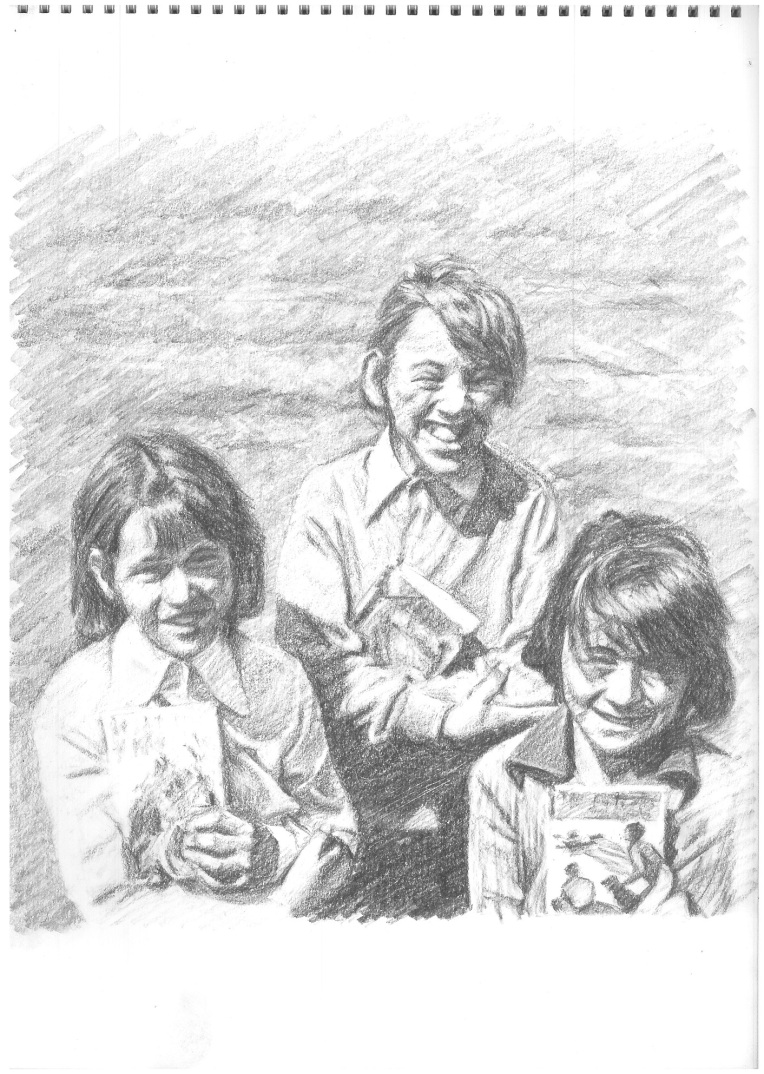
‘The Prize Pupils, 1976’
graphite and putty eraser on ‘Seawhite’ cartridge paper/30 x 42cm
